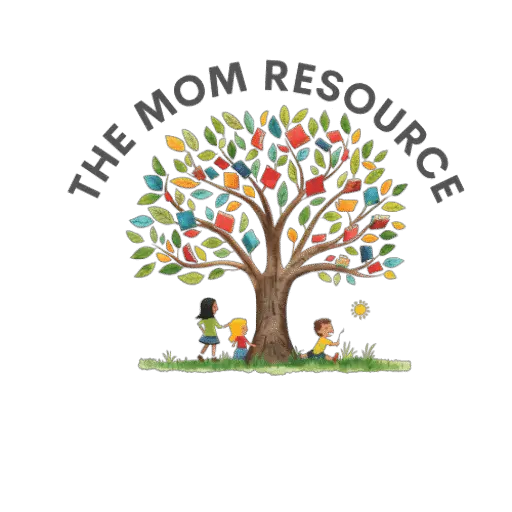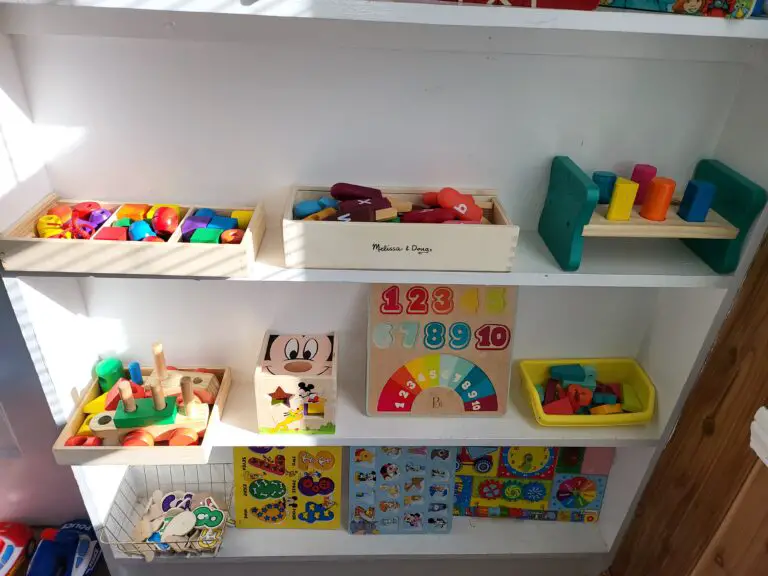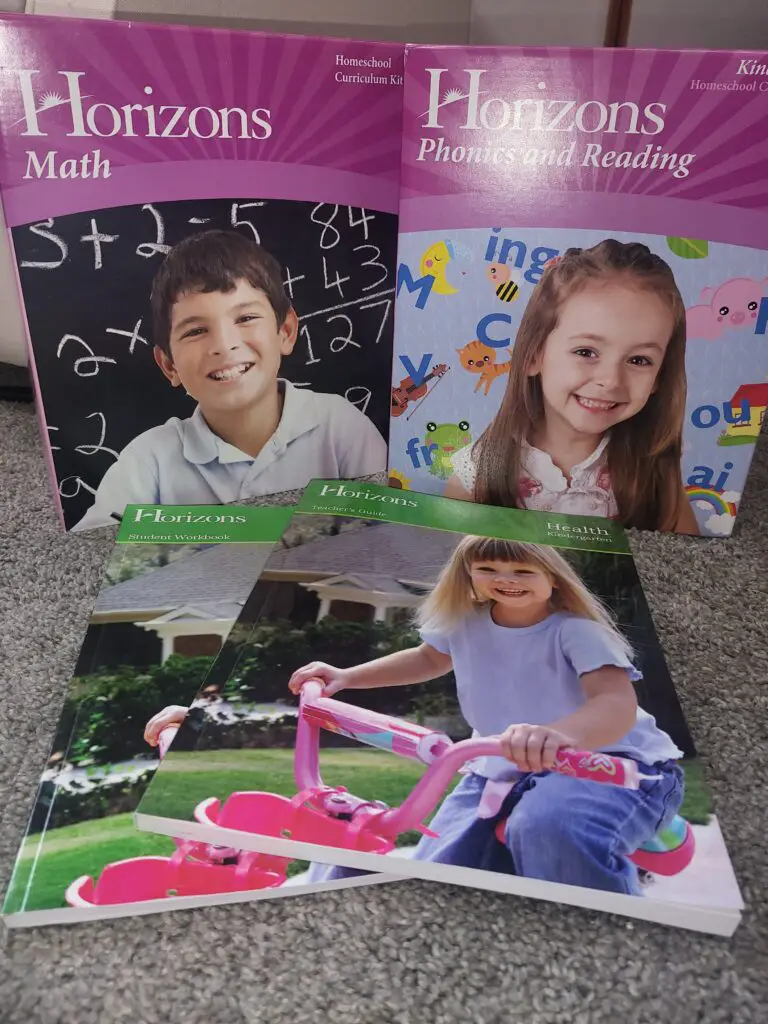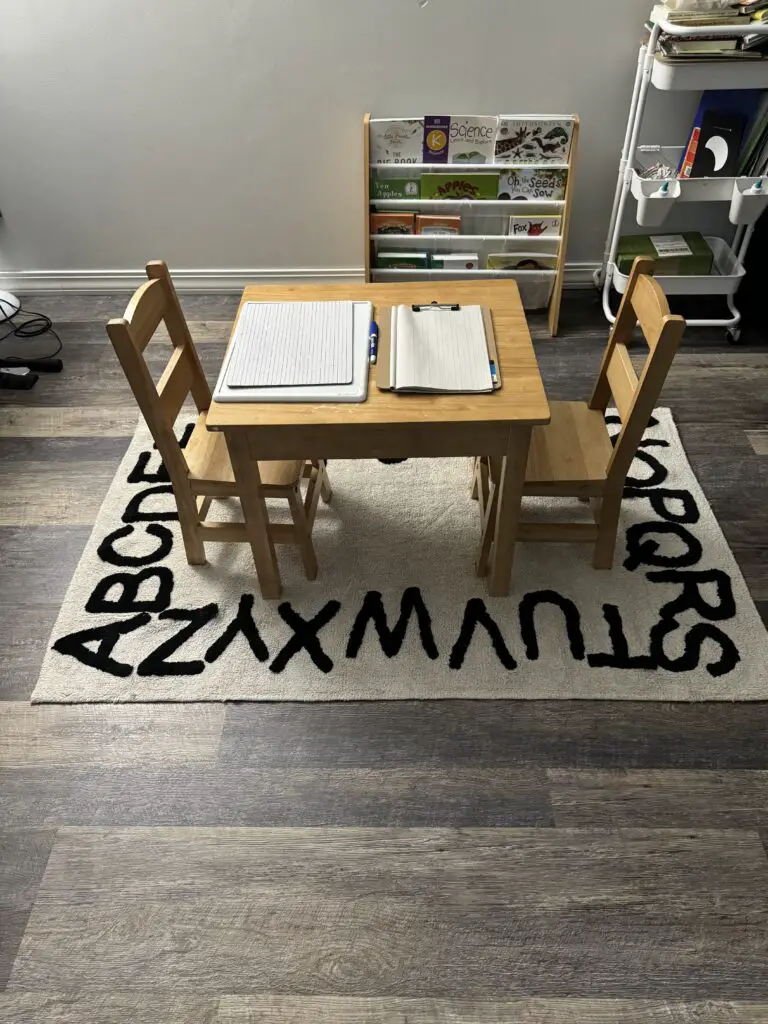Best Homeschool Curriculum for Beginners in 2025: Your Step-by-Step Starter Guide
Introduction: You Can Absolutely Do This!
Starting homeschooling can feels terrifying, but it doesn’t have to be! I still remember my first day, wondering if I’d made a big mistake. My son’s education was dependent on me, and I had absolutely no idea what to do first.
Turns out I wasn’t alone: 73% of new homeschool families report feeling overwhelmed during their first month, but 92% say they gained confidence within the first semester. You’re not alone in feeling lost either, and those feelings are completely temporary!
The best homeschool curriculum for beginners isn’t necessarily the most comprehensive or academically rigorous program, it’s the one that helps YOU feel confident as a teacher while keeping your kids engaged and learning. After helping many families through their homeschool transitions and surviving my own rocky start, I’ve identified the programs that make those crucial first months manageable instead of miserable.
In this guide, I’ll walk you through beginner-friendly curriculum options that require minimal prep work, provide clear daily plans, and won’t leave you crying into your coffee at 10 AM (yes, I’ve been there). Whether you’re pulling your child from school mid-year or starting fresh in kindergarten, you’ll find practical recommendations that actually work for real families, not just the perfectly organized Pinterest homeschoolers.
Let’s turn that overwhelm into excitement!
Why Beginners Need Different Curriculum Characteristics
Not all curriculum is created equal, and what works beautifully for experienced homeschoolers can completely derail beginners. Understanding what makes curriculum beginner-friendly will help you avoid costly mistakes.
- Detailed lesson plans eliminate guesswork about what to teach and when
- Minimal preparation time prevents overwhelm during the adjustment period
- All-inclusive packages reduce the stress of piecing together multiple resources
- Clear instructions for both teacher and student build confidence
- Flexibility for mistakes allows grace during the learning curve
- Built-in assessments help you know if your child is actually learning
When I started homeschooling, I made the classic beginner mistake of choosing curriculum that looked beautiful, but required extensive preparation. Every evening I’d spend two hours planning the next day’s lessons, searching for supplemental materials, and creating activities from scratch.
Within three weeks, I was exhausted and resentful. The curriculum wasn’t bad, it just wasn’t designed for someone who didn’t know what they were doing yet!
Beginner-friendly curriculum anticipates your questions and answers them before you even ask. It tells you exactly what to say, which pages to complete, and how long each activity should take. This might sound overly scripted to experienced teachers, but for new homeschoolers, it’s like having a mentor sitting beside you, guiding every step.
The best beginner programs also accommodate mistakes gracefully. You will mess up. You’ll skip lessons accidentally, realize you taught something out of order, or discover your child doesn’t understand a concept you thought they’d mastered. Programs with built-in review, flexible pacing, and forgiving structures let you recover from these inevitable stumbles without derailing the entire year.
Another crucial factor is the learning curve for the parent. Some curricula require you to understand complex educational philosophies or teaching methods before you can implement them effectively.
Classical education, for example, is brilliant but requires significant study to execute properly. Charlotte Mason’s methods are wonderful, but involve techniques most parents didn’t experience in their own education. Starting with something more straightforward allows you to build teaching skills before tackling more complex methodologies.
Top Complete Curriculum Packages for First-Time Homeschoolers
Complete curriculum packages are usually the smartest choice for beginners because they eliminate the overwhelming task of selecting individual subjects and ensuring everything works together cohesively.
- Everything in one purchase simplifies shopping and budgeting
- Coordinated subjects ensure you’re not accidentally creating gaps
- Consistent daily schedule establishes routine quickly
- Teacher guides walk you through every lesson step-by-step
- Proven track record means thousands of families have succeeded with these programs
Time4Learning sits at the top of my beginner recommendations for good reason. This online curriculum handles absolutely everything, teaching, grading, record-keeping, and progress tracking. Your job is simply to ensure your child logs in and completes their work. The interactive, game-like format keeps elementary students engaged without requiring any prep work from you. I recommend Time4Learning to every overwhelmed new homeschooler who asks me where to start.
The program includes language arts, math, science, and social studies for PreK through 12th grade. Automated grading means you immediately know if your child understands the material or needs additional help. The parent dashboard shows exactly what your child has completed, how long they spent on each activity, and which concepts they’re struggling with. During my most chaotic homeschool year (we moved twice and I was pregnant), Time4Learning kept us on track when I barely had energy to function.
One limitation is screen time. Students spend 2-3 hours daily on the computer, which concerns some parents. We balanced this by requiring outdoor time and hands-on activities every afternoon. Also, the program moves at a predetermined pace that might feel too slow for advanced students or too fast for struggling learners, though you can adjust grade levels for individual subjects.
Sonlight’s instructor guides are absolutely brilliant for beginners. These detailed guides tell you exactly what to read aloud, which pages to assign, what questions to ask, and even provide interesting discussion points. Sonlight builds your entire homeschool around fantastic literature that brings history, geography, and culture alive through stories rather than dry textbooks.
The read-aloud component creates natural bonding time while educating simultaneously. My favorite memories from our Sonlight years involve snuggling on the couch, traveling through time and across continents via stories. The four-day schedule leaves Fridays completely free for field trips, co-ops, catching up, or just breathing. This built-in margin saved my sanity more times than I can count.
However, Sonlight requires a significant reading commitment—typically 1-2 hours of read-aloud time daily plus independent reading for older students. If reading aloud feels tedious or your voice gives out easily, this might not be your best fit. The upfront cost is substantial ($800-1000 per student), though the resale value remains strong if you decide to switch later.
My top recommendation for beginner homeschoolers is The Good and the Beautiful. It has become incredibly popular among new homeschoolers, and I completely understand the appeal. The curriculum is gorgeous. Seriously! The layout and illustrations make you actually want to open the books. Everything is affordable (around $250-400 for a complete year), requires minimal teacher preparation, and gently guides both parent and student through each lesson.
The open-and-go format means you can literally open the teacher guide and start teaching immediately. Clear instructions, scheduled lessons, and integrated subjects (the language arts program weaves in art, character training, and nature study) create a cohesive educational experience. The Christian worldview is present but non-denominational, which works for many families regardless of their specific denomination.
I’ve been using The Good and the Beautiful for four years and appreciate how little stress it creates. You can see my review here:
Easiest Subject-Specific Curriculum for New Homeschoolers
Sometimes you want the flexibility of choosing individual subjects while still keeping things simple. These programs are exceptionally beginner-friendly while providing excellence in their specific areas.
- Clear daily lessons with minimal parent preparation needed
- Video instruction reduces the teaching burden significantly
- Self-grading options when available save time and stress
- Strong customer support helps when you get stuck
- Gentle learning curves for both parent and student
Math-U-See revolutionized math in our house and remains my top recommendation for beginners teaching mathematics. The program uses systematic video instruction where Steve Demme teaches each concept directly to your student. You watch the video together, your child completes practice problems in the workbook, and that’s it. No complicated teacher preparation or advanced math knowledge required on your part.
The manipulative-based approach makes abstract concepts concrete and understandable. The systematic approach teaches one concept thoroughly before moving to the next, preventing the confusion that comes from jumping between topics too quickly.
Each level focuses on a single concept (addition, subtraction, multiplication, etc.) which some consider a weakness because students don’t get as much spiral review. However, for beginners, this focused approach actually makes teaching easier because you’re not juggling multiple concepts simultaneously. The placement tests help you start at exactly the right level, preventing frustration from material that’s too hard or boredom from material that’s too easy.
Teaching Textbooks provides the ultimate in independent math learning. Students watch the video lesson, complete problems in the textbook or online, and receive immediate feedback. The program includes helpful hints when students get stuck and automatically grades everything. For parents who feel intimidated by teaching math or have multiple students at different levels, Teaching Textbooks provides enormous relief.
I used Teaching Textbooks for my middle schoolers, and it gave them independence while ensuring they learned properly. The conversational teaching style makes math feel friendly rather than intimidating.
The main consideration is that Teaching Textbooks sometimes allows students to move forward without full mastery. Occasional spot-checks ensure your student isn’t just clicking through without understanding. The program is also more expensive than some alternatives, with annual subscriptions running $60-80 per student.
All About Reading and All About Spelling form the most beginner-friendly literacy program I’ve encountered. These programs literally tell you exactly what to say and do in each lesson. The scripted lessons might feel awkward initially, but they provide tremendous confidence when you’re uncertain how to teach reading effectively.
The multi-sensory approach uses tiles, cards, and activities that make learning to read engaging rather than tedious drill work. The program is particularly effective for struggling readers or students with dyslexia because it systematically teaches phonics rules without overwhelming students. Each lesson builds carefully on previous lessons, and frequent review ensures concepts stick.
The time investment is significant—expect 20-30 minutes per lesson, and you must be actively present teaching. This isn’t independent work curriculum. However, the results are worth it. I’ve watched kids who were years behind in reading catch up within months using All About Reading. The program works equally well for precocious preschoolers learning to read early and older students who need remediation.
Institute for Excellence in Writing (IEW) removes the mystery from teaching writing. Instead of vaguely telling students to “write better,” IEW provides specific structures and techniques that make improvement measurable and achievable. The video instruction teaches both you and your student simultaneously, so you’re learning how to teach writing while your child learns how to write.
The program uses a gradual approach, introducing one new element at a time while building on previous skills. Starting with simple summarizing exercises, students progress to original compositions using the taught structures. For beginners who panic at the thought of teaching writing, IEW provides the roadmap you desperately need.
My hesitation was the intensive nature—IEW requires active parent involvement and takes significant time compared to “just write an essay” approaches. However, the structured method produces real results. My reluctant writer went from producing two painful sentences to writing multi-paragraph essays with sophisticated vocabulary within a single year.
Budget-Friendly Options for Beginners
Starting homeschooling already involves significant lifestyle changes and possible lost income. You don’t need to spend thousands on curriculum to provide an excellent education.
- Free online programs offer complete curricula at zero cost
- Affordable complete packages under $500 provide everything needed
- Library resources supplement inexpensive curriculum beautifully
- Used curriculum markets offer significant savings on quality materials
- Printable options reduce costs for those comfortable with printing
Easy Peasy All-in-One Homeschool deserves serious consideration, especially for families making financial sacrifices to homeschool. This completely free online curriculum covers grades K-12 using free internet resources organized into daily lessons. A homeschool mom created it out of necessity, and thousands of families now use it successfully.
The program isn’t flashy—it’s basically organized links to free educational resources across the internet. But organized is the key word. Instead of drowning in the endless ocean of free resources available online, Easy Peasy curates and sequences everything appropriately. You simply follow the daily assignments, clicking through to complete each activity.
I know families who’ve used Easy Peasy exclusively for years with great results. The limitations include occasional broken links (free internet resources sometimes disappear) and lack of physical materials for hands-on learners. The program works best for independent students comfortable with computer-based learning. For families in financial crisis or starting mid-year without curriculum funds, Easy Peasy provides a legitimate educational option that costs absolutely nothing.
Khan Academy offers another completely free option with exceptional math and some science content. The video lessons are clear and engaging, the practice problems adapt to student performance, and the progress tracking helps parents monitor learning. My kids used Khan Academy supplementally for years, and I cannot overstate the quality of this free resource.
The main limitation is Khan Academy isn’t a complete curriculum—it’s strongest in math, weaker in other subjects. But paired with library books for history and literature, free science resources, and basic writing instruction, you can piece together a full education for free. This requires more work than using a complete package, but it’s absolutely doable on zero budget.
The Good and the Beautiful, mentioned earlier, provides incredible value at $300-400 yearly. When you calculate that most other complete curricula cost $800-1200 per student, the savings are substantial. The quality rivals programs costing three times as much, making it my top recommendation for budget-conscious beginners who want a polished, easy-to-use program.
Your local library offers more homeschool resources than most beginners realize. Most libraries have free educational programs, museum passes, online course access through platforms like Coursera or Great Courses, and obviously thousands of books. I built entire history units using nothing but library books, and my kids learned more from those engaging stories than they ever would from textbook chapters.
Librarians often love helping homeschool families and can suggest age-appropriate books on any topic you’re studying. Many libraries offer special homeschool programs, story times, or educational workshops specifically designed for homeschooled children. Building a relationship with your library not only saves money but enriches your homeschool immeasurably.
Used curriculum marketplaces like Homeschool Classifieds, Rainbow Resource used section, and local Facebook homeschool groups offer gently used materials at 40-60% off retail prices. This strategy lets you try expensive curricula without the financial risk.
What to Avoid as a Beginner Homeschooler
Knowing what NOT to choose is just as important as knowing what TO choose. These common beginner mistakes can derail your homeschool before you gain momentum.
- Overly complex educational philosophies requiring extensive study to implement
- Curriculum requiring extensive preparation adding stress to already busy days
- Too many subjects or activities leading to burnout and frustration
- Advanced programs that assume teaching experience you don’t have yet
- Trendy methods that don’t match your family’s reality
Classical education is wonderful, but it’s honestly not ideal for most beginners. The trivium philosophy, heavy emphasis on Latin and logic, and rigorous memory work require significant parent knowledge and commitment. I watched several new homeschool families crash and fail, attempting classical education right out of the gate. Once you’re confident in basic teaching and your children have solid foundations, then exploring classical methods makes sense. Starting there is like trying to run a marathon when you’ve never jogged around the block.
Charlotte Mason methods, while gentler than classical, still involve techniques most parents didn’t experience growing up like nature journaling, picture study, narration instead of testing, carefully selected “living books.” These are beautiful practices worth learning eventually, but they’re not intuitive for beginners already feeling overwhelmed. I implemented Charlotte Mason successfully my third year of homeschooling after I’d built basic teaching confidence.
Avoid curriculum that requires you to gather materials from multiple sources or create activities from scratch. Those beautiful unit studies on Pinterest look amazing, but they require hours of planning, shopping, and preparation. Save the creative teaching for when you’re not barely surviving. Use pre-planned, open-and-go curriculum until you find your rhythm.
Don’t try to replicate school at home, t doesn’t work and it will make everyone miserable. You don’t need to teach from 8 AM to 3 PM. You don’t need seven subjects daily. You don’t need homework and busywork. One of homeschooling’s greatest benefits is efficiency. You can accomplish in 2-3 hours, what takes schools 6-7 hours because you’re teaching directly without classroom management issues.
I spent my first month assigning way too much work, trying to prove we were doing “real school.” My kids were stressed, I was stressed, and we weren’t enjoying anything. Once I cut our workload in half and focused on truly learning rather than just completing assignments, everything improved dramatically. Less really is more, especially when beginning.
Creating Your First Homeschool Schedule and Routine
Having great curriculum is only half the battle, you need a sustainable routine that works with your real life, not some idealized version of homeschool you saw online.
- Start with core subjects only during the first few weeks
- Build routine gradually rather than implementing everything simultaneously
- Include buffer time for lessons running long or children needing breaks
- Remain flexible while establishing general rhythms
- Adjust expectations to match your family’s actual capacity
Begin with just three subjects: math, reading/language arts, and one other subject that excites your child (often science or history). Master these basics before adding music lessons, art classes, foreign language, and everything else you think homeschoolers “should” do. I tried doing everything immediately and ended most days in tears. When I stripped back to basics, suddenly homeschooling felt manageable.
Most elementary students need only 2-3 hours of actual instruction daily. Seriously! That’s it. Middle school might require 3-4 hours. High school 4-5 hours. But these are focused learning hours, not the entire school day. The rest of the day is for free play, independent reading, hobbies, chores, and just being kids.
Create a simple daily rhythm rather than a rigid minute-by-minute schedule. Our rhythm looked like: breakfast and chores, math and reading, snack break and outside time, one additional subject, then free time for the rest of the day. Some days math took 20 minutes, other days it took an hour. The rhythm stayed consistent while the timing flexed naturally.
Build in buffer time because nothing ever goes exactly as planned. Lessons take longer than expected. Kids need bathroom breaks, snacks, or emotional regulation time. The baby wakes up early from a nap. The dog escapes and you spend 30 minutes chasing him through the neighborhood (true story). If you schedule every minute tightly, these normal life events become crises instead of minor adjustments.
Give yourself grace to have terrible days, even terrible weeks. Some days you’ll accomplish nothing academic, and that’s okay. My worst homeschool day involved a stomach bug, a clogged toilet, and nobody learning anything except that Mom knows some impressive words when truly frustrated. We survived. Your family will too.
Support Systems Every Beginning Homeschooler Needs
Homeschooling doesn’t mean doing everything alone. Building support systems makes the difference between thriving and barely surviving.
- Local homeschool groups provide community and practical support
- Online forums offer advice and encouragement 24/7
- Experienced mentor families can answer questions and provide perspective
- Co-op classes reduce teaching burden while providing socialization
- Understanding family and friends who support your decision
Finding a local homeschool support group changed everything for me. These families understood the unique challenges of homeschooling and offered practical advice without judgment. We shared curriculum, organized field trips, and most importantly, commiserated during rough patches. Knowing other people struggled with the same issues I faced made those challenges feel less isolating.
Online communities like Facebook homeschool groups, Reddit’s homeschool subreddit, and forums like The Well-Trained Mind boards provide support when you’re struggling at 2 AM, wondering if you’ve ruined your children forever. Experienced homeschoolers remember being beginners and generously share wisdom.
If possible, find a mentor family, experienced homeschoolers willing to answer questions and provide encouragement. My mentor family let me observe their homeschool day, which demystified the entire process. Seeing that their homeschool was messy, imperfect, and nothing like Pinterest made me feel so much better about my chaotic reality.
Homeschool co-ops offer classes taught by other parents, reducing your teaching load while exposing your children to different teaching styles and social situations. Co-ops are particularly valuable for subjects you’re uncomfortable teaching, like high school chemistry or music theory. They also provide built-in social opportunities, addressing one of homeschooling’s most common concerns.
Don’t underestimate the importance of support from your spouse, extended family, and friends. Homeschooling is challenging enough without facing criticism or undermining from people you love. Have honest conversations about your decision, share your educational plans, and set boundaries around negative comments. When my mother-in-law questioned our choice, a calm conversation about our reasons and plan helped her become one of our biggest supporters.
Conclusion: You’ve Got This!
Choosing the best homeschool curriculum for beginners means finding programs that build your confidence while educating your children effectively. The options I’ve shared, (Time4Learning, Sonlight, The Good and the Beautiful, Math-U-See, All About Reading, and others), have helped thousands of families successfully launch their homeschool journeys.
Remember that your first year is primarily about learning how to homeschool, not achieving educational perfection. Give yourself permission to make mistakes, change curriculum mid-year if needed, and adjust expectations as you discover what works for your unique family. The curriculum you choose matters less than your attitude, flexibility, and commitment to your children’s learning.
Start simple, focus on basics, and add complexity gradually as you gain confidence. Use detailed, beginner-friendly curriculum that reduces stress rather than increases it. Connect with other homeschoolers who can encourage and guide you. Most importantly, trust yourself. You know your children better than anyone else, and that knowledge is more valuable than any curriculum or teaching method.
The fact that you’re reading this guide shows you care deeply about making wise choices for your children’s education. That caring, combined with decent curriculum and willingness to learn, is absolutely enough to create a successful homeschool. You can do this!
What’s your biggest concern about starting homeschooling? I’d love to hear what’s on your mind and help you work through those worries. The homeschool community is here to support you every step of the way!
Welcome to the adventure!







